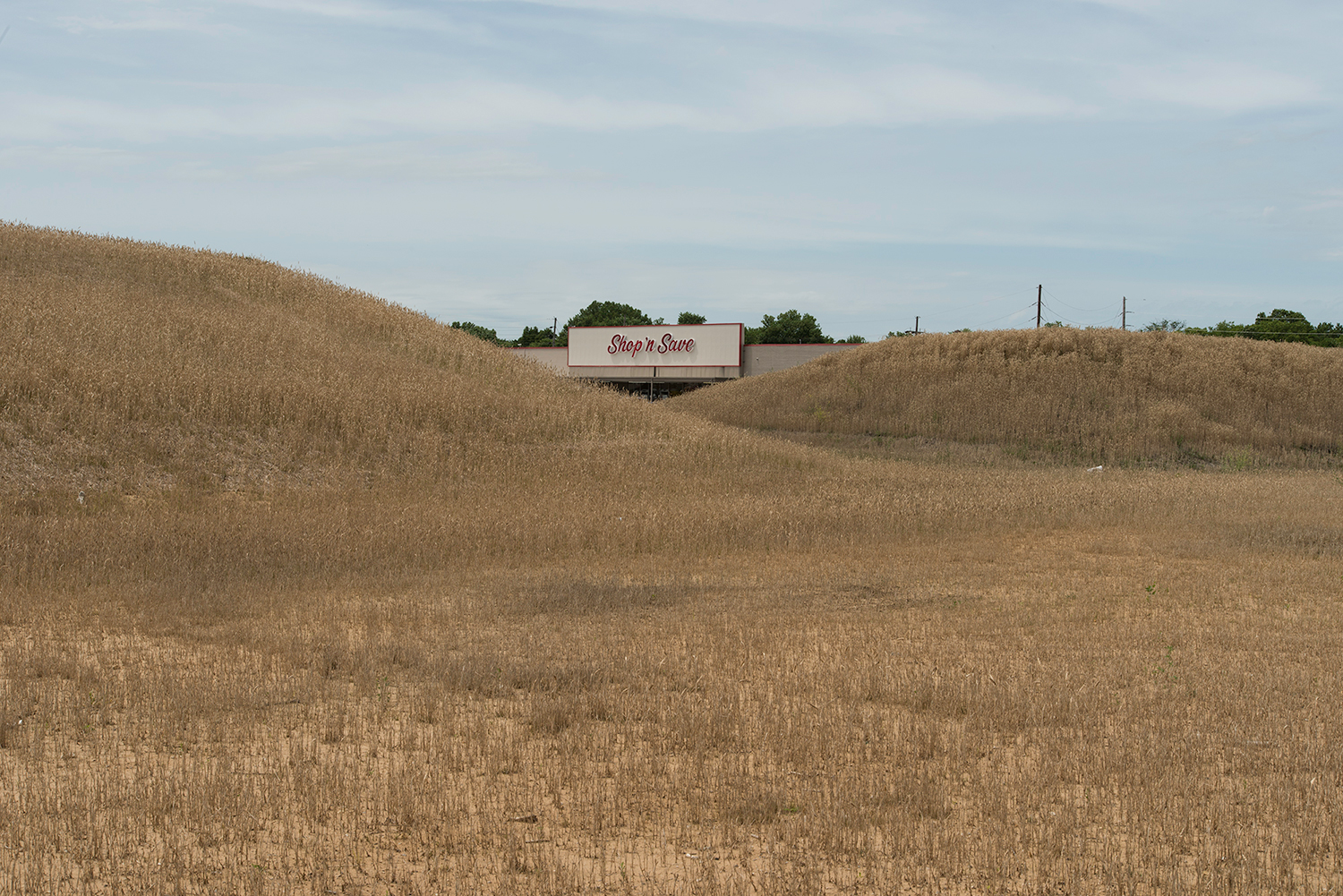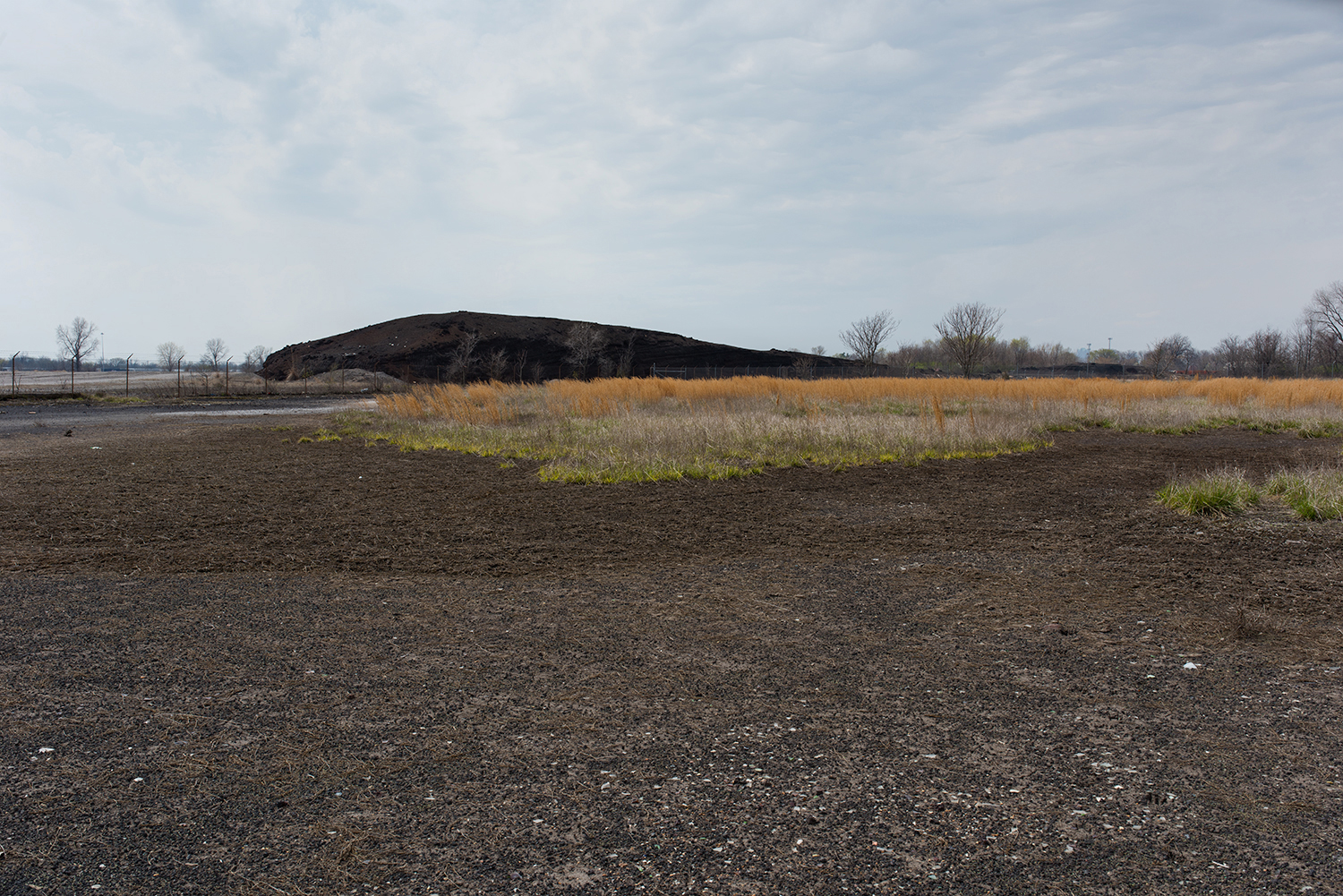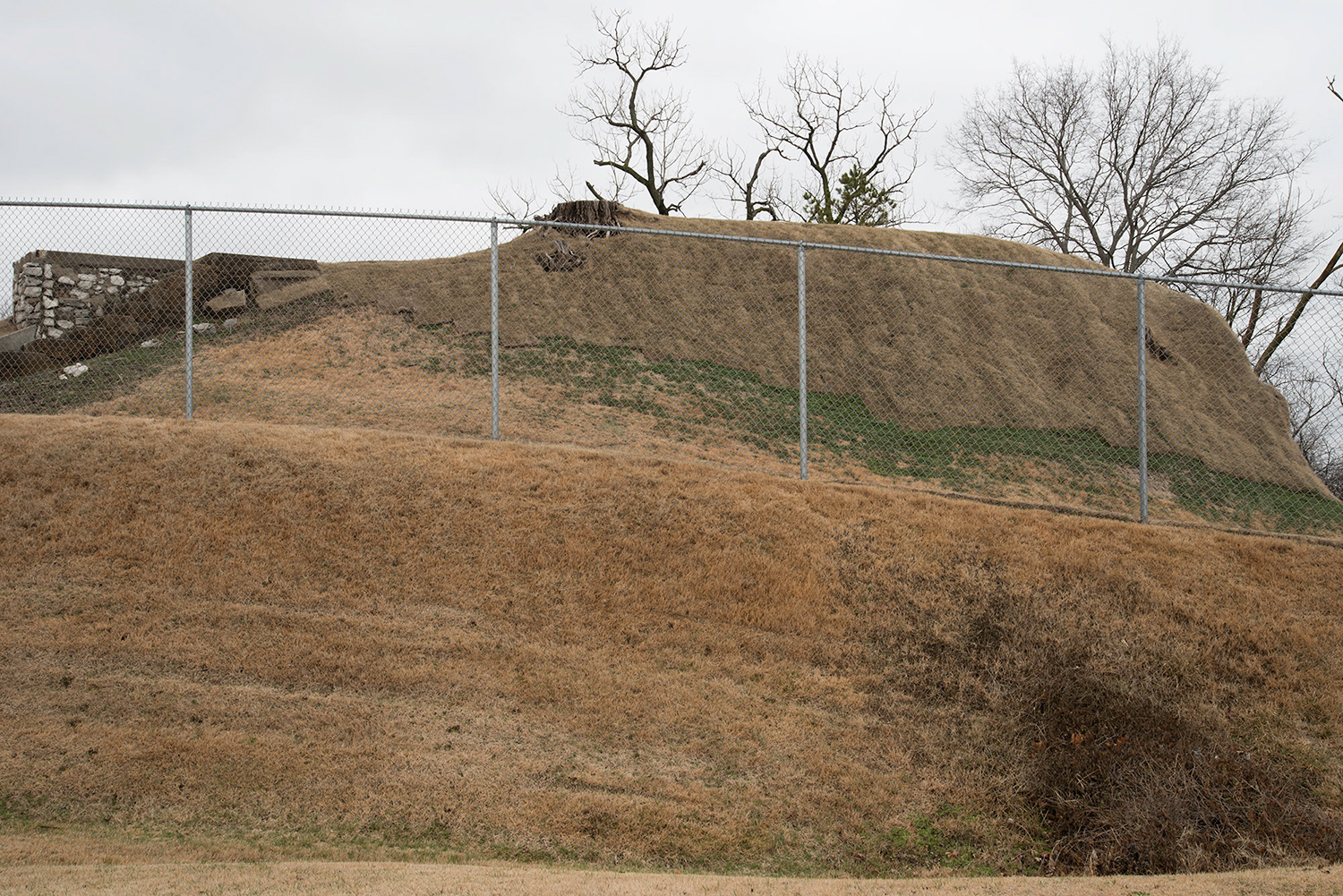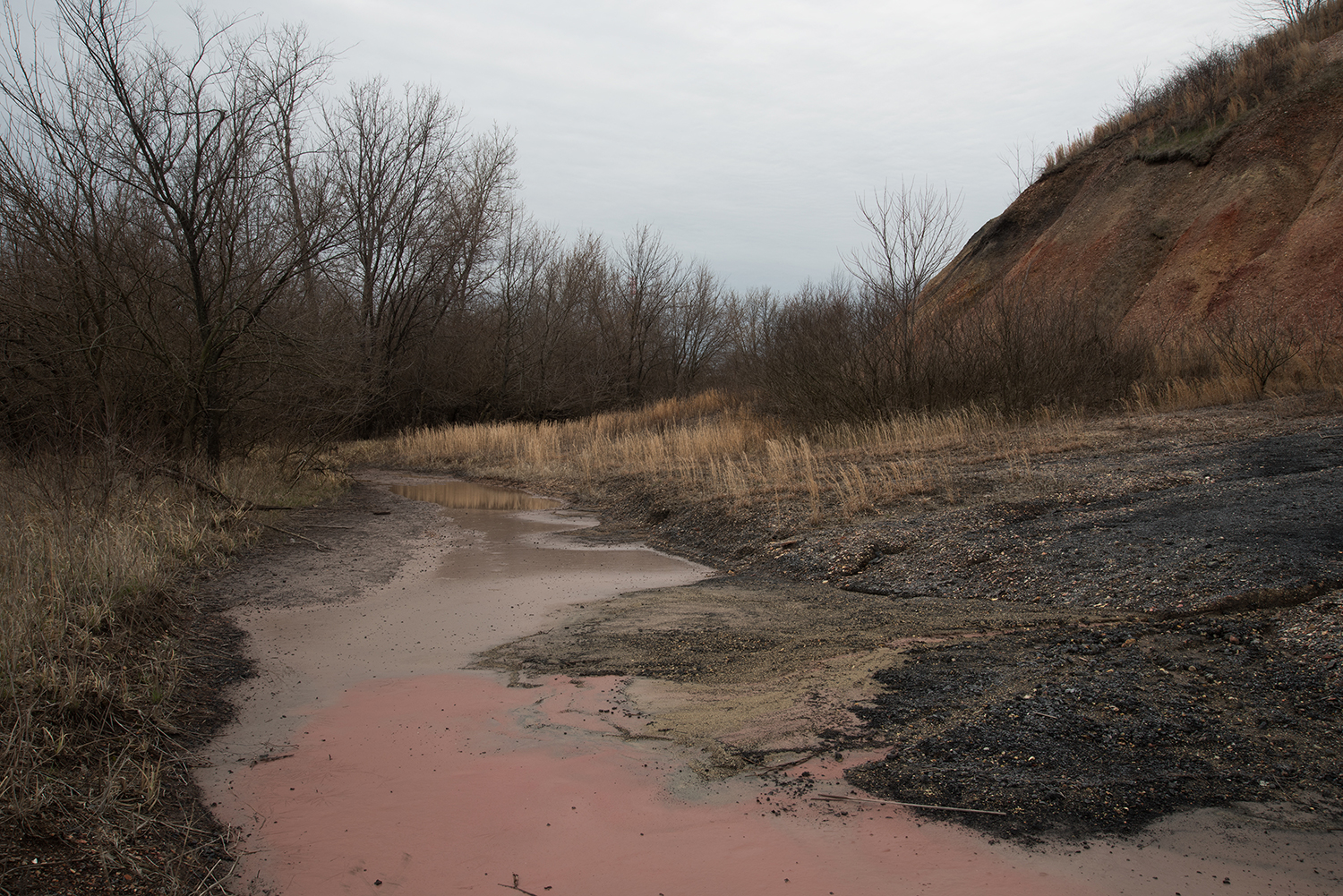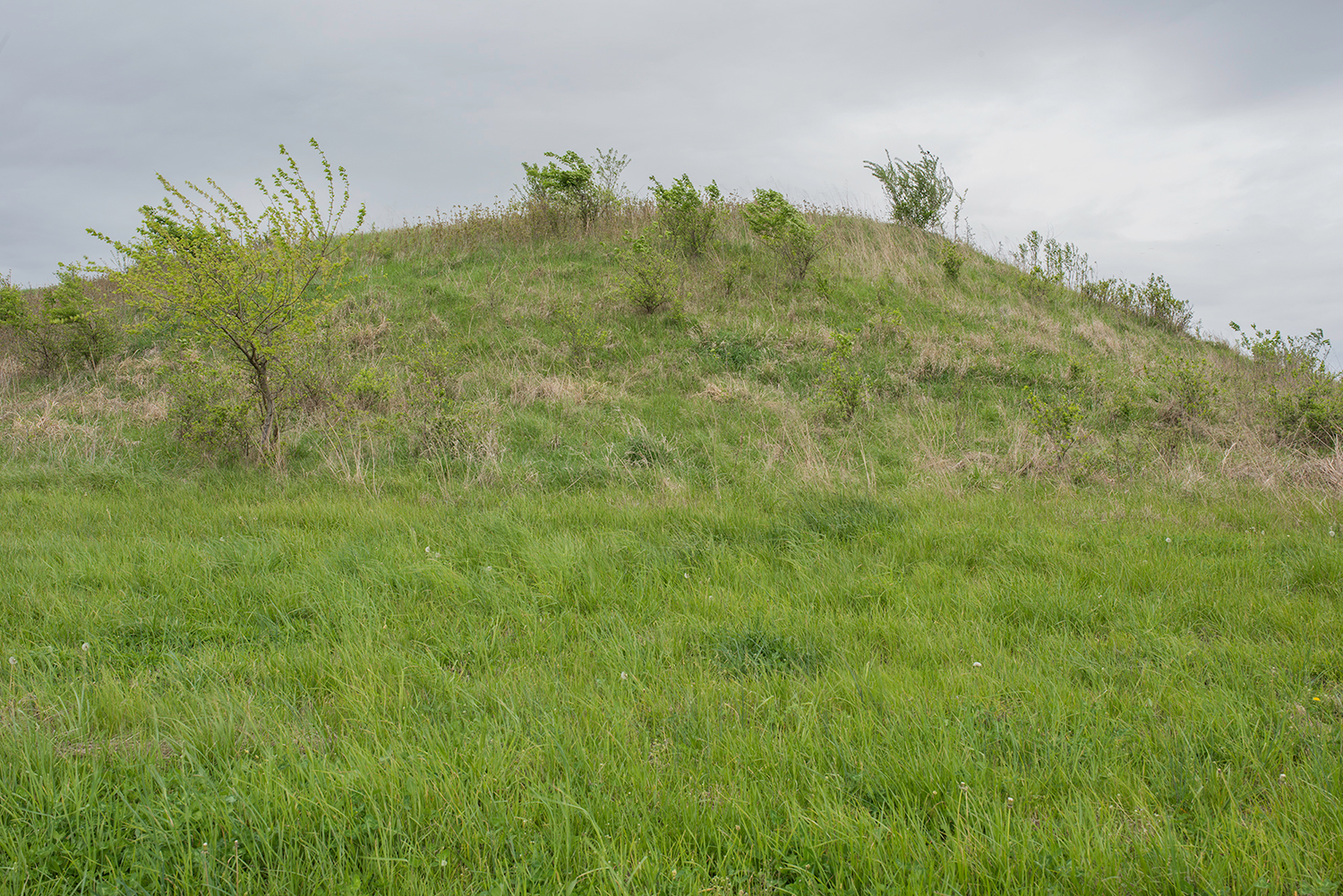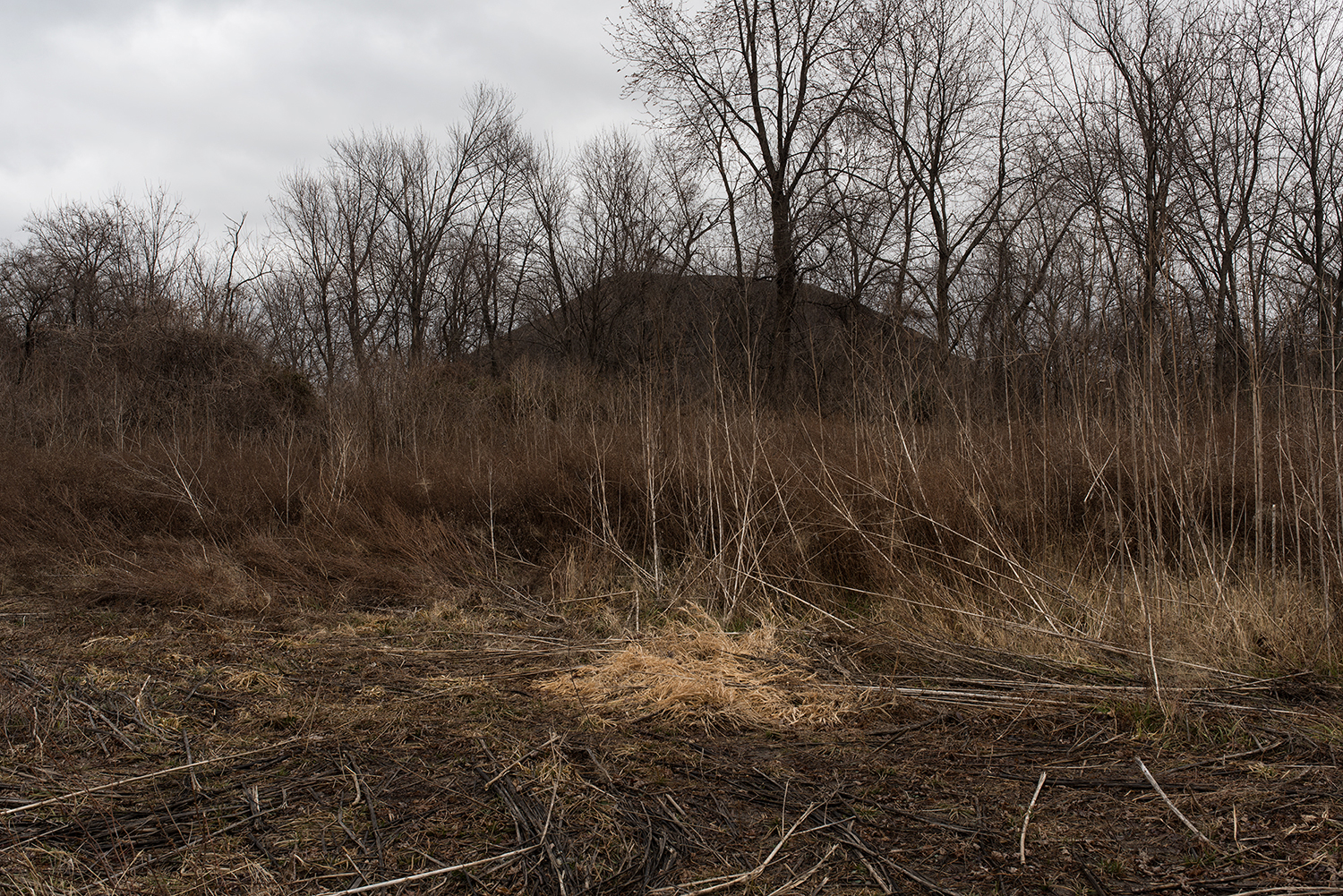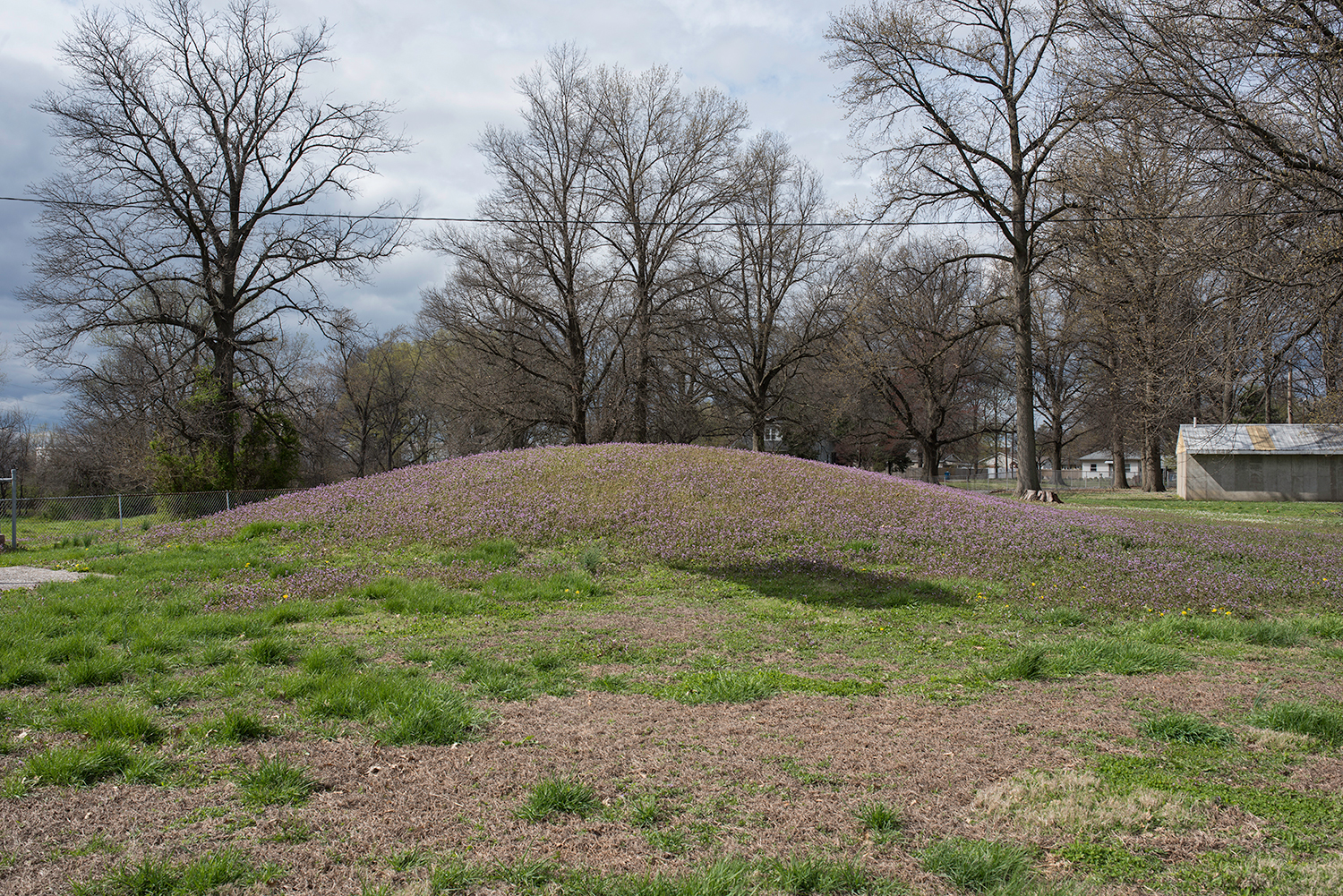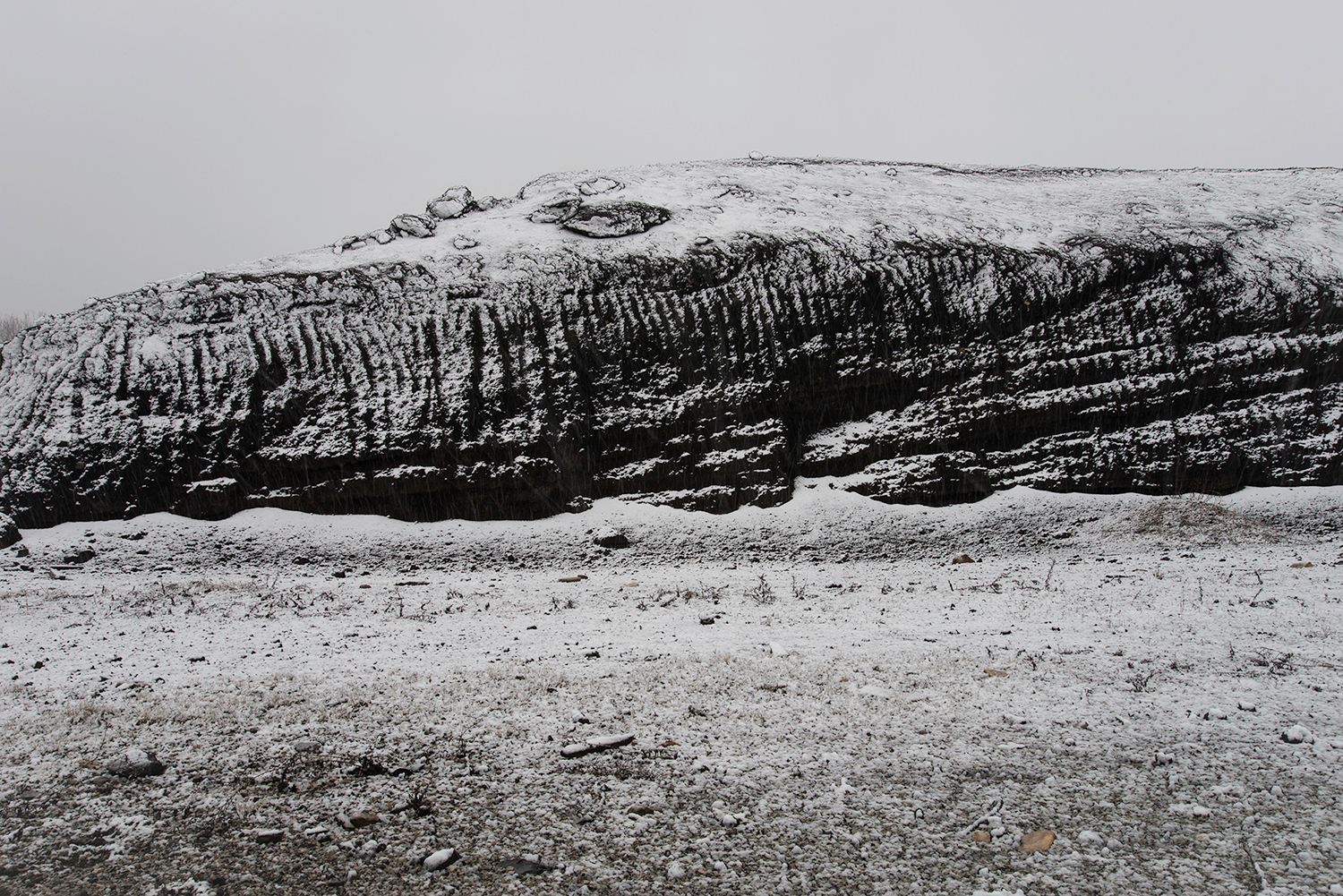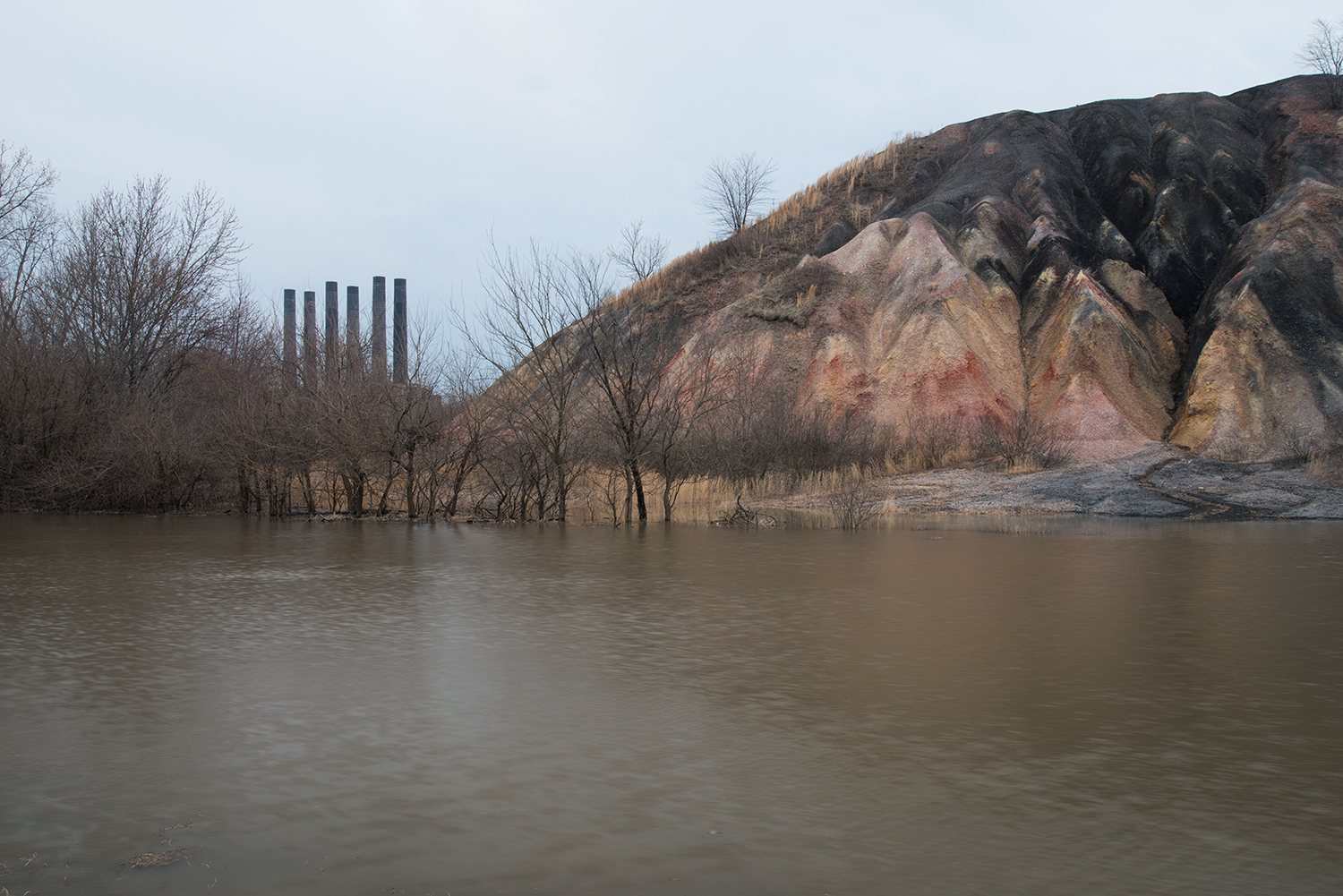Q&A: jennifer Colten
By Abbey Hepner | July 18, 2019
Jennifer Colten’s work focuses on ambiguous landscapes and histories of cultural and geographic space. Her photographic practice commits to an exploration of sites at the margins of the urban environment where resilience and ecological transformation are present. Central concerns consider complex and intertwined issues of the social, cultural and environmental implications of land use. Colten has received several selective grants to support the development of ongoing projects. They include a Mid-America Arts Alliance grant, the Ferguson Academic Seed Grant, and two Artist Support Grants from the Regional Arts Commission in St Louis. Colten’s photographs are in collections nationally and internationally- Selected institutions include The Denver Art Museum, The Museum Hundertwasser, Vienna, The Museum fur Photography, Braunschweig, Germany, The Missouri History Museum, The National Building Arts Center, Sauget, IL, Museo de Antioquia, Medellin, Colombia.
The American Bottom (5735), 2015-2019
Abbey Hepner: Thanks for taking the time to talk with me, Jennifer. Tell me a little bit about your background and what led you to make work about ‘place’- i.e. location embedded with meaning.
Jennifer Colten: To one degree or another my photography has always been about landscape, culture, the social space, and the environment. I suppose the idea of ‘place’ encompasses all of these things at once. From early on I explored the peripheries of urban environments. I was interested in the spaces in-between - areas where I would find subtle but potent evidence of human engagement with the land. This act of wandering around the intermediary zones is still with me in my creative process. Some of the earliest work I made focused on neighborhoods in transition. Though I had not yet articulated it precisely, I believe the intertwining conditions of these changing landscape and the impact on people’s lives, was embedded even in that early work.
AH: Your work often looks at the complex history and landscape of the St Louis, Missouri region. When did you move there and how has living there influenced your work and the questions that you are asking through it?
JC: I came to St Louis in 1990. I was not at all inspired by the flat open landscape when I first moved here. It took a very long time to begin to relax about the space in the Midwest. I should say I moved here from Boston where space and the sense of spatial relationships seemed very different.
My earliest work in the St Louis Metro region looked at a particular cemetery- Washington Park Cemetery. This was at one time the largest African American cemetery in the region. The cemetery has undergone many many racial, social, ethical and economic injustices over the years. Through the Washington Park Cemetery work, I was learning about St Louis and its difficult and deeply hidden histories. It was not until over 20 years after the making of that work that I was able to get it shown in St Louis. The reasons for this are multiple, but I am positive that much of it is due to institutional fear about the subject matter I was presenting. In 2017 I was finally able to show this work, installing my exhibition, “Higher Ground: Honoring Washington Park Cemetery Its People and Place”, at the Sheldon Art Galleries in St Louis. This project was shown soon after the murder of Michael Brown and addressed the painful and complicated histories of racial injustice and cultural erasure in St Louis. The landscape of this cemetery holds memory and trauma. It also holds beauty and grace. These components all carry into current work.
This flat landscape is deceptive. It is easy to dismiss, overlook, ignore. In actuality, there is so much here. I think part of this is due to the dependence upon the car in the Midwest. Traveling along a highway at 60 mph (or more) does not allow the subtlety of perception or direct encounter with the material effects on the land.
Things shifted in huge ways when I began working on The American Bottom Project. At first, it was appreciation, then intrigue and then a real and deep passion for this seemingly banal landscape. This is, in fact, an inscrutable landscape- deceptive, enigmatic and compelling.
Left: The American Bottom (4489), 2015-2019
Right: The American Bottom (8342), 2015-2019
AH: You collaborated with Jesse Vogler for your project, Significant and Insignificant Mounds. Tell me about the project and how the collaboration began.
JC: The current and ongoing expression of our project Significant & Insignificant Mounds began with the itinerary of the same name on the American Bottom Project website. Jesse and Matthew Fluharty conceived of this website exploring the richness of this unique landscape. Geographically The American Bottom runs from Alton Illinois to the mouth of the Kaskaskia River- an approximately 65-mile stretch that travels along the Mississippi River. This region is many things all at once: floodplain, wetland, industrial zones, company towns, farming communities, land of early French colonization, and importantly the sites of Indigenous people of the Mississippian era (800-1400) - who occupied this region first.
The website encourages an invitation to visit The Bottoms both virtually and physically with itineraries written by a range of researchers and artists looking at the American Bottom from different perspectives.
Jesse has an incredible ability to research, visualize and articulate historical context alongside contemporary interpretations of the cultural landscape. Our work marries my photographs with his original writings and other gathered material: maps, survey notes, diagrams, archeological information.
Significant & Insignificant Mounds looks at the uncanny proximity of Indigenous Mounds alongside the mounds of industrial production- the slag heaps, landfills, salt piles, aggregate residue- within the American Bottom.
Our work speaks to the slipperiness of form and meaning as we bring together my contemporary photographs, archival materials, historical narratives, and Jesse’s lyrical essays. In part, we are addressing the politics of landscape and the tensions between Indigenous histories and industrial production. The title of our project is intended to raise questions of signified meaning. The value judgments suggested in the title are not meant to be easily untangled. In the end, a “flattening” of presumed meaning is our intention and each of these mounds is both significant and insignificant. Our project points toward a certain assumption of meaning so often brought to the interpretations of landscape, to photography, and to descriptive writing and histories.
AH: You often return to the same location again and again, as if to bear witness to something. Tell me about your process of research, examination, and the exploration that takes place in these peripheral landscapes. How does it all come together?
JC: It is essential to my creative process to return over and over again. Sometimes this is to observe the changes with the seasons, weather or other shifting conditions. I find returning to sites offers me a particular kind of challenge and one that is sometimes unexpected. For me understanding a site in its context takes time and I am a slow worker in this regard.
To love a place and to love engaging with a place means returning over and over again. It is kind of like any significant relationship where the draw to interact, explore, and just be there is part of the process. Sometimes I find beautiful surprises and sometimes I am deeply saddened when things inevitably disappear or change, but photography offers a good and satisfying record. The fact that the photograph can act as a document of sorts, or as you mentioned as evidence or witness to the encounter is always a part of my work.
AH: You mentioned that you take a traditional approach to landscape photography but that being on the ground and being physically present is important to you. Can you talk more about this and how your process makes you conscious of the risks you are taking and the privilege you have to take them?
JC: It is very true that being physically in the spaces and literally walking on and through the landscape is important to my process. I see my work building on long traditions of landscape representation and have from early on looked to landscape painters, the Exploration photographers of the 19th century, and the work of the New Topographics photographers. While compositionally my work embraces a traditional approach, I consciously work to make my voice relevant to our contemporary time. Instead of taking an intentionally objective or detached perspective, I am interested in actively and physically engaging with the places I photograph. This means lots of walking along the ground that I photograph, and as we mentioned earlier, doing this over and over again as a way to understand from multiple perspectives.
You mention risk. I almost always photograph alone. There are times that Jesse and I explore the region together and I will photograph as we travel throughout the Bottomlands, but most often I am alone in my work in the field. There is a certain amount of inherent risk in being out alone. I like to think I have a good intuitive sense of my surroundings and I try to pay attention to that intuition. I work slowly with the camera on a tripod. I guess this is somewhat traditional although I most often work with a digital camera. This slowness is about observing and sensing my environment. It is about being in a place as opposed to looking at it from a distance or as an abstracted experience.
I also work hard to interact in conversations with people that I encounter. This is almost always a rewarding experience and I find people are open and interested to share their thoughts, but I never want to just take the photographs and be seen to be taking something away from the places. I see these interactions with both the landscape and with the communities more like exchanges. This shift in language and approach is important. Rather than taking or capturing I see my work as building on encounters and forming understanding through relationships. Again this speaks directly to my desire to return over and over to places. Building this kind of relationship feels more sustaining to me.
Mound (9182), 2015-2019
AH: I am interested in how we experience place-- the way it can be simultaneously personal, ancestral, and social. Places can tap into genetic memory. Some of your work has dealt with non-places; sites that are meant to be ignored. There is an interesting paradox within Significant and Insignificant Mounds. Can you talk about the cultural and historical meaning of some of the places in the series and how they are juxtaposed with industrial sites?
JC: The individual sites of Significant & Insignificant Mounds are themselves not necessarily paradoxical. It is in the recognition that these specific sites sit in such close proximity to one another that the relationships arise. Cahokia Mounds was the largest pre-Columbian settlement north of Mexico and now sits less than 2 miles from a major area landfill. Just a bit further along Collinsville Rd., the ancient road of travel to the Mississippi River, is an active Superfund site. These odd adjacencies exist all across the geographical space of The American Bottom. Multi-layered historical complexity exists throughout this region, so it is hardly a surprise to learn that the literal layering of time is still present in this landscape.
AH: I love what you said about photography being a paradox in your interview with Lauren Henkin for Tilted Arc.
“Photography itself embodies paradox. The indexical relationship inherent in the medium, the relationship between the thing in the world photographed and the representation of that thing, opens endless questions about how we understand our relationship to our surroundings. The ability to express the very concept of paradox is one reason I love the photographic medium.”
JC: I love how photography has a unique ability to be simultaneously descriptive and elusive- a slipperiness that contributes to how photographs make their meaning.
AH: You have been involved with the communities that you photograph, by creating events and bringing the work you make back into them. Can you talk about some of the social practice work you’re doing and the collaboration with Matthew Fluharty and Jesse Vogler to create the community newspaper, “The American Bottom Gazette”?
JC: An essential component of this work is how it engages with community, how it builds meaning through interaction, and how it speaks to the complexity of relationships. Again, it is with consideration to the intertwining of critical spatial, historical, cultural, and environmental components that we make this work. Essential to our practice is placing this work back into the places from which it has all been made.
In March of this year, we published the first issue of “The American Bottom Gazette”. Acting in the space between a local newspaper and an art piece, The Gazette extends the online expression of the American Bottom website. We featured two distinct municipalities of the American Bottom, including contemporary photographs, maps, archival material, documents, and a local recipe. Many community members generously shared their stories and memories and in this way, the Gazette became a larger group endeavor. Our other collaborators are Treasure Shields Redmond and Alisa Blatter. Treasure is an amazing artist who contributes her interviews with her father Eugene Redmond, poet laureate of East St Louis. The interview grew from Treasure’s ongoing weekly podcast “The Memoir My Dad Wouldn’t Write”. Alisa contributes immeasurably to the design and layout of the Gazette.
In October we will publish our second issue to coincide with a community cookout and public panel, a podcast series and exhibition entitled River Memories, a walking excursion from Mound site to Mound site and many other engagements. Throughout these projects is the attention to the histories, the cultural presence (and absences), and the contemporary space of the American Bottom. This work is being done as part of the much larger effort led by the Berlin-based Art Haus HKW and the Max Planck Institute.
Mississippi. An Anthropocene River looks at the environmental, social, economic and political issues that have defined the areas along the Mississippi River.
AH: You talked about the Anthropocene Vernacular. Can you explain what that means?
JC: The term Anthropocene has been around for some time now and defines our current geological era- the era in which human activity has made significant and possibly irreversible impacts on the environment, ecology, and climate. Often the Anthropocene is studied as an abstract or distant concept- a condition detached from the human lived experience. Those captivating aerial views of devastation in oil fields or strip mining zones have a certain pull, but what about the experiences of people who live next to those places, work in those industries or have ancestral roots on that land?
The Anthropocene Vernacular extends the abstract views and the usual academic definitions of the Anthropocene to include the voices and participation of people in these particular communities.
To circle back to something we talked about at the beginning of this interview, my practice of walking the ground, walking over and over again as a way to see and feel nuance, is to embrace taking the long view or slow time as part of this work.
AH: What is the Anthropocene River Journey and what will take place?
JC: The Anthropocene River Journey is a journey down the Mississippi River connecting all of the Field Stations involved in the year-long research organized by the HKW project. Our Field Station #3, The Anthropocene Vernacular program will take place on October 4-8, 2019 here in St Louis.
Mound (7791), 2015-2019
AH: What’s next for you?
JC: The work in The American Bottom is ongoing as is the work on Significant & Insignificant Mounds. In addition to exhibiting this work locally, there are some plans beyond the St Louis Metro region. The exhibits and events of the Anthropocene Vernacular this fall are coming close. There are plans for more issues of The Gazette. I have recently joined Monaco- a St Louis based artist-owned alternative gallery space. I am excited about future exchanges we will have with other artist-run spaces as well as planning for my opportunity to contribute in the Fall of 2020.
AH: Thank you so much for sharing your work, Jennifer!
JC: Thank you for such great questions!


